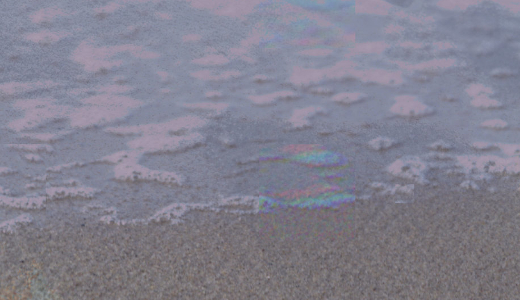There are distortions and odd sounds that linger, all in slow motion and together they create the full feeling of sustained nostalgic relaxation.

These are friendly ghostscapes
Lingering darker textural and feedback driven drones, suggesting emulations of memories or their musical counterparts. The sound is evocative of beautiful ambience and loops, the pace is relaxingly slow. I think of the sound of yesteryear, like old recordings whenever I listen to it. The quotes ahead are from the composer and the Past Inside The Present.
“Dwell Time focuses on the moments in between.”
I love to pretend that I am a history teacher. The term Furniture Music was coined by Erik Satie in 1917. Satie intended to present background music originally played by live performers. Satie himself applied the name only to five short pieces, composed in three separate sets. As Satie’s pieces of furniture music were very short pieces, with an indefinite number of repeats, this kind of furniture music later became associated with repetitive music (sometimes used as a synonym of minimal music), but this kind of terminology did not yet exist in Satie’s time. Furniture Music appears as the launchpad for minimalist / experimental / avant-garde music since it was the first instance of music being played or produced out of context: not as a centerpiece but as a cerebral backdrop.
“Dwell Time explores the moments in between active and passive listening.”
The sound I hear is pleasant, it does not require attention to details and nuances. It floats there, you can float with it or you can ignore it and go about your tasks, I like that. The instruments I detect are something like brass, maybe woodwinds, probably from electronic synthesizers. The specific instrumentation is indistinct, and the listening sensation is encased in a formal loopy drone backdrop, and enjoys the sustained elongated disengaged tonal ease that you might find drifting on breezes with your window open, if you are lucky. One of the lessons of John Cage was how to find or recognize music in the world around us.
“A sound that maintains a unique balance of properties can start as an active relationship that slowly dissolves into the background and accompanies a listener over its course.”
The sound I hear often has a crafted tonality as if made to sound like a collection of old recordings, like the sound is coming back from the dead. Several decades after Satie’s death, Furniture Music was revived, largely due to the American composer John Cage, as the composer’s theory of minimalist background music. For a quarter of a century after the composer’s death, all of the furniture music pieces remained hidden from the general public, apart from being mentioned in early Satie biographies.
“The Dwell Time signal remains completely analog, utilizing homemade tape samples and hardware synthesizers to encourage the listener to move between the different states of listening.”
Dwell Time: What It Is and Why Does It Matter?
The minimalist references and anachronisms were not solidified until composer John Cage performed Satie’s “hidden” piece Vexations 840 times as requested by Satie’s own scribbled notes on the original sheet music. The music Dwell Time is an homage to gentle timeless amber capsules from anachronistic revivals of attempted simulations of dream music, the music I might hear in one of my dreams. I can only write about what I know. Maybe your dreams have the same soundtracks?
From the cemeteries of sound capturing technologies that were so miraculous when emerging, but now sound foggy, crackly, and old. This too should be optimized during method development. Dwell time is the actual scanning time and thus directly under control of the examiner. Traditionally, dwell time histograms have been plotted on linear graphs. The dwell times are described by a Gaussian distribution with an exponential tail. Dwell time is the duration between when a user clicks on a search engine result, and when the user returns from that result, or is otherwise seen to have left the result. Any manipulation that would allow a cell to traverse a vessel faster than its delay time will prevent occlusion of that vessel. The dwelling time covers the period that elapses between the application of the sample to the test slide and its insertion into the measurement device. Beyond regulating luminal dwell time and permeability of…
Aw shucks, let’s get started with the tracks.
The ghost of remembering visits in eight different ways, each are consistent variations on the same range of tonalities and moods. The pace is slow and easy. These are friendly ghostscapes, this is not designed to be an anxiety producing artform. There are distortions and odd sounds that linger, all in slow motion and together they create the full feeling of sustained nostalgic relaxation.
“Repeat Cognition” (03:38), “Encoder Error” (06:33), “Time Decay” (04:45), “Infra-Low” (05:31), “Activation Synthesis” (05:49), “Waking Life” (04:31), “Suspended State” (04:06), and “Recall Loop” (06:06).
T.R. Jordan is an ambient and classical composer, thought to be located in Washington (D.C.). Some additional projects include The Greatest Hoax (Bandcamp, Soundcloud).
Some titles I found interesting include Expiration Compositions, Just Passing Through, and As The Light Dims.
Past Inside the Present (PITP) is an American ambient label with a focus on offering up some of the very best ambient, drone, soundscape, and minimal music by passionate artists from across the globe.
Once upon a time if you said that certain music put you to sleep, that was considered awkward. This album, Dwell Time, today, right now, might be prescribed to help sleep to find you when you are prepared to find it. The music herein gently unfolds behind you and around you while you drift along, offering no abrupt surprises or distractions to snag your mind and hold you awake or to bring you back to your restless obsessions.
Dwell Time is available on Past Inside the Present. [Bandcamp]



























